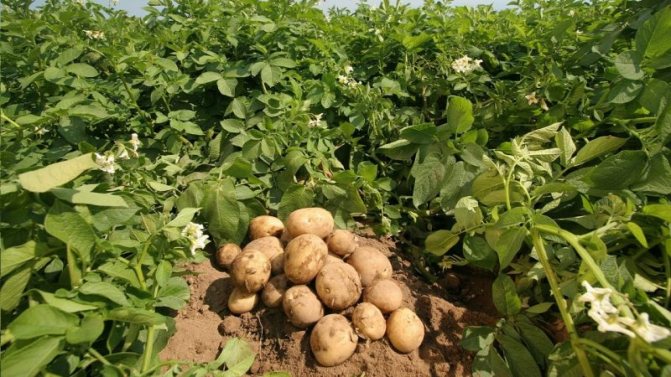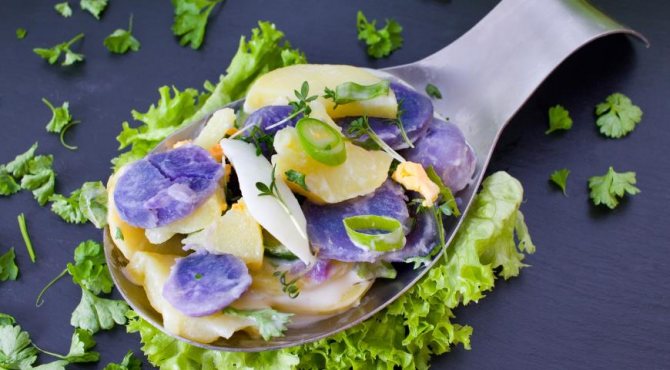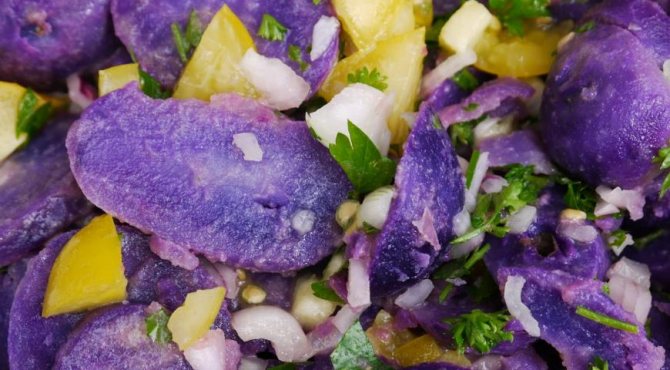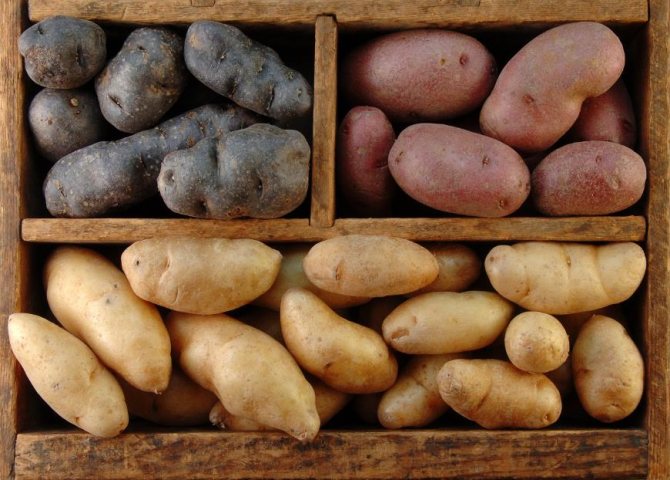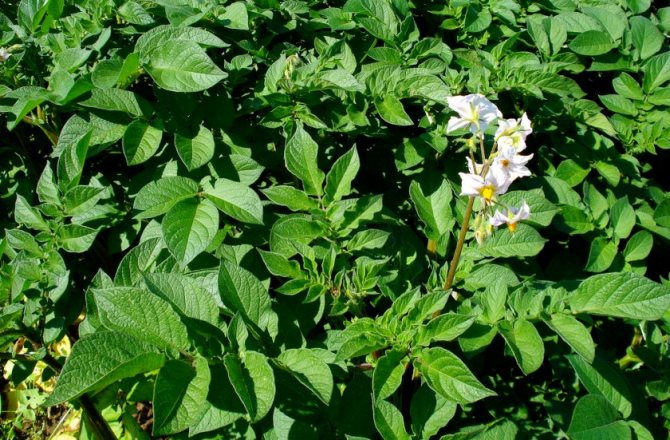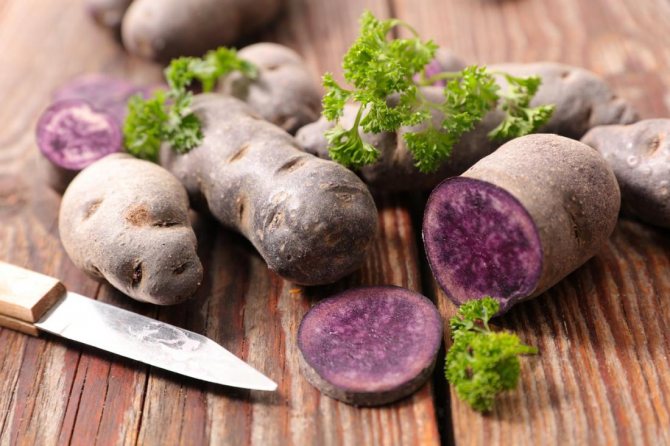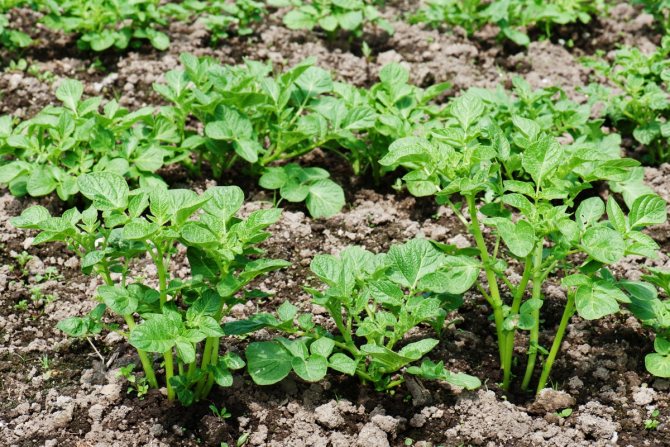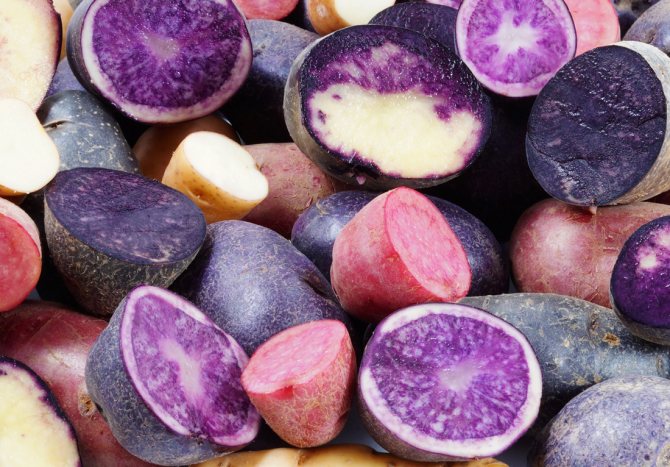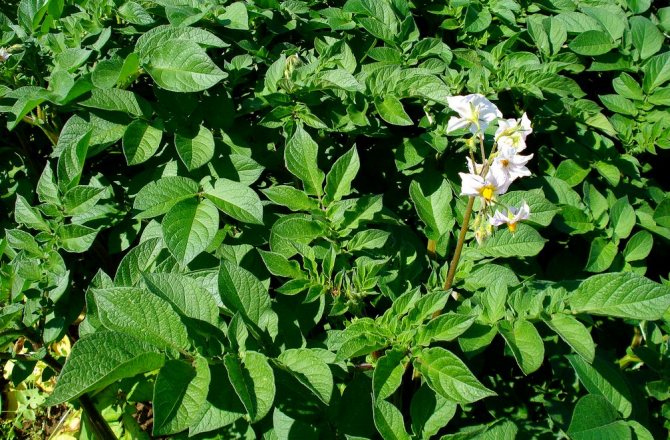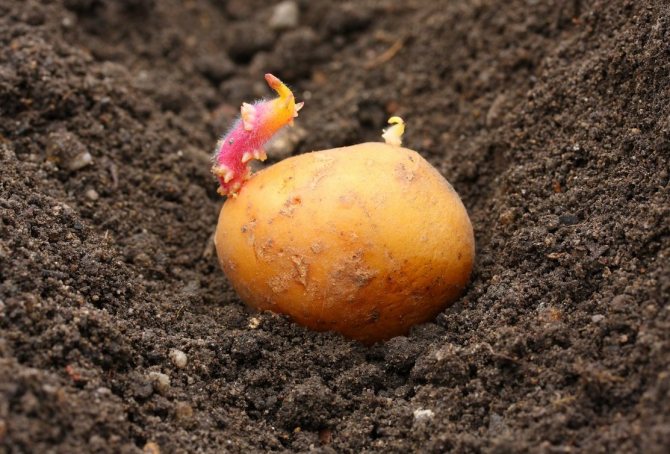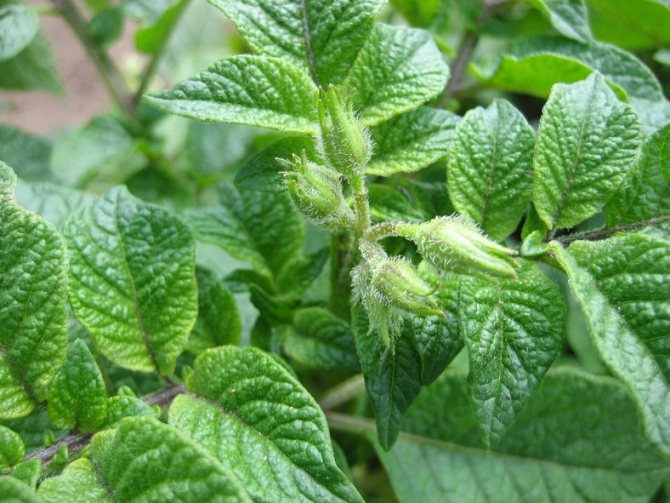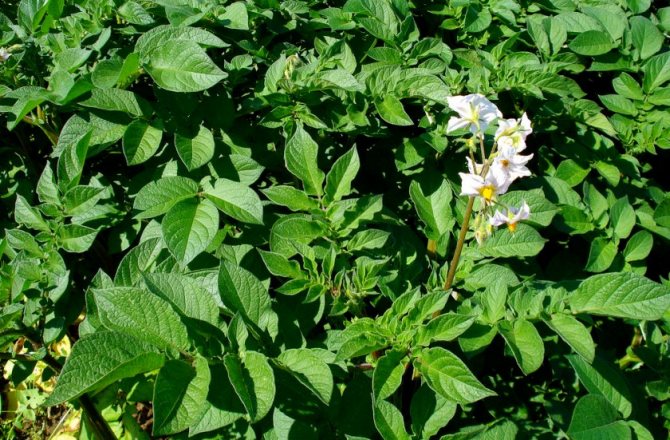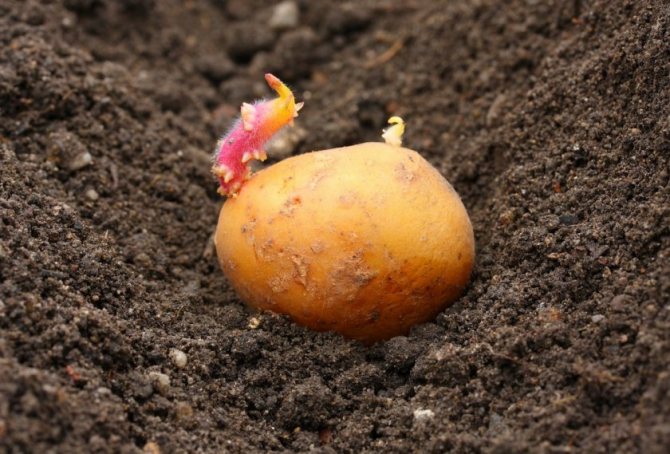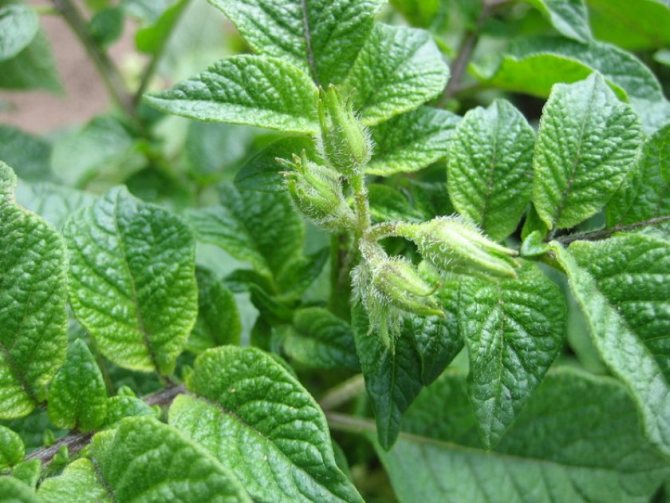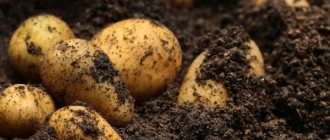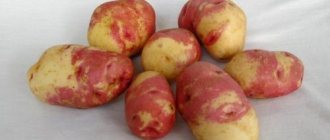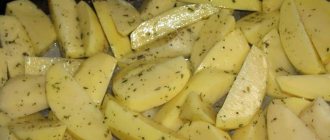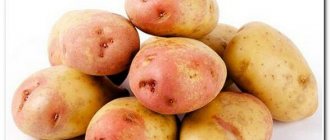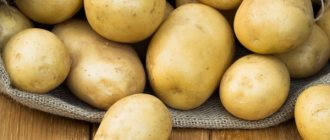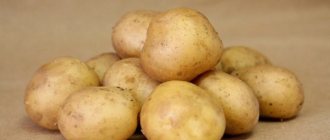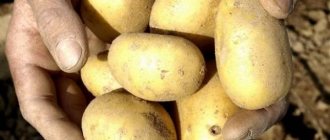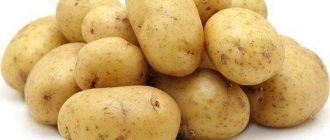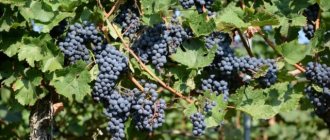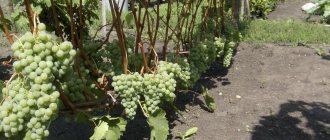The potato variety Ermak is appreciated by gardeners for the early ripening period, high yield, marketable tubers and excellent taste. Once this variety was widespread not only in Russia, but throughout the world and was valued among farmers no less than the famous Dutch varieties. In the 21st century, the popularity of Ermak has slightly decreased, but adherents of traditional and proven agricultural crops still love him.
The article will tell you what kind of variety it is, what features it has and how to grow it correctly.
Description of the variety
Ermak is a domestic potato variety introduced to the State Register of the Russian Federation back in 1978... Refers to early ripening, table varieties.
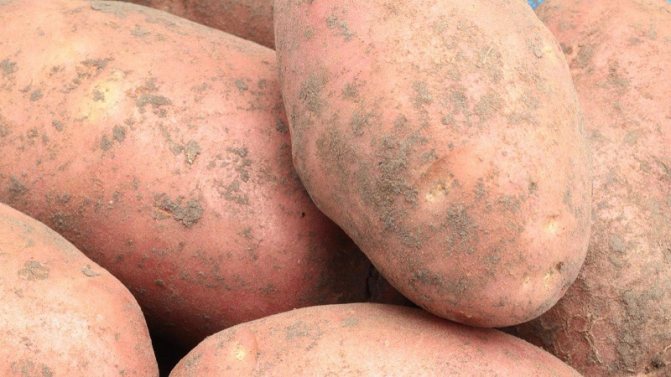
Origin and development
Ermak - an improved version of the early rose elite tubers... The painstaking work of domestic breeders led to the receipt of an improved Ermak. It is under this name that the variety is listed in the State Register.
Reference. Several years later, an unknown farmer has grown tubers of unprecedented size on his plot. The potato originating from this population is nicknamed Lapot.
Chemical composition, trace elements and vitamins
Potatoes are distinguished by significant nutritional value and low starch content - 10-12%. The composition includes:
- vitamins of group A, K, B, E and carotene;
- macronutrients - potassium, calcium, iron, copper, manganese.
The low starch content determines the friability of the pulp in tubers... The potato acquires excellent taste and good keeping quality.
Characteristics of tubers, description of appearance and yield
The following parameters will help to describe the Ermak variety:
- Tubers... The peel is pink, the flesh is white with reddish clear dots. The weight of each fruit is 90-117 g.
- Bushes... Erect, rarely covered with leaves. The flowers are pale purple. One bush yields up to 15 medium-sized potatoes.
- Yield... The amount of the crop depends on the quality of the care. From 1 hectare harvested from 350 to 470 centners.
Important! After heat treatment and peeling, the pulp does not darken. The tubers are suitable for boiling, frying, stewing. The variety is not suitable for mashing due to its low starch content.
Which regions is best suited for
Ermak recommended for cultivation in the West Siberian region... But there are no restrictions for other regions and CIS countries.
What is the difference from other varieties
Ermak is distinguished by frost resistance and generally unpretentiousness to weather conditions... It is noticeably inferior to modern varieties in terms of weight and number of formed tubers, level of immunity.
Origin story
Initially, in the mid-70s of the last century, scientists breeders of the Omsk Agrarian Scientific Center bred a potato called Ermak by the method of clonal selection of the Early Rose variety. During the tests, a new variety of this potato called Improved Ermak was selected and obtained. It was under this name that this variety was included in 1978 in the State Register of Russia. Although experts recommend Yermak potatoes for cultivation, first of all, in the West Siberian District, this variety at one time successfully spread and conquered not only all of Russia, but also the near abroad. True, later he was ousted from the gardens of varieties of foreign selection, which many gardeners still regret.
Much later in the 21st century, with the light hand of an unknown gardener, who received the tubers of this potato variety of unprecedented size, he was nicknamed Laptem. And in recent years, the Ermak variety has received a new wave of recognition and is often distributed among gardeners under the popular name Lapot. And many do not even suspect that they are acquiring a long-known variety of Siberian selection Ermak under this name.
The main advantages and disadvantages of the variety
Among the advantages of the Ermak variety:
- high taste and marketability of tubers;
- good productivity;
- heat resistance and frost resistance;
- high keeping rates - up to 93%;
- suitability for long-term transportation and storage;
- versatility of application.
disadvantages:
- low immunity - the variety is moderately protected from late blight and common scab, suffers from potato cancer and golden nematodes;
- low starch content, which makes it unsuitable for purees.
Advantages helped the Ermak variety to spread in Siberia, neighboring countries... But to obtain the best yield indicators, attention is required: regular feeding and hilling.
Features of planting and growing
Yermak is planted in the traditional way in open areas, garden beds. Be sure to take into account the crop rotation and predecessors: the best are legumes, pumpkin seeds, siderates.
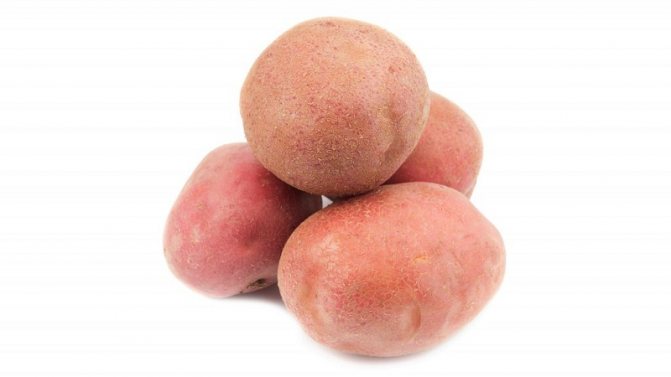

Preparing for landing
Activities include selection inventory, soil preparation and planting material:
- Tool... Planting is done using markers, planters or cones. This will allow you to make even grooves, will provide easy care for them. Used hedgehogs-cultivators, walk-behind tractors, special plows for the formation of ridges.
- Planting material... Healthy, undamaged tubers are selected 3-4 weeks before planting. Healthy seeds are sorted by size. Selected tubers are germinated: laid out in a lighted room with a temperature of 12-16 ° C. After large potatoes can be cut into two or four parts, leaving 2-3 eyes.
- The soil... The variety loves loose black earth soils, complemented by sand. Before planting, a shovel of humus, 2-3 g of a phosphorus-potassium mixture, a glass of wood ash are introduced into each hole.
Seed material must be soaked in a disinfectant solution before planting. (1% potassium permanganate, boric acid or "Fitosporin"), liquid fertilizer (400 g of superphosphate and 400 g of nitrate in 10 liters of water), activators "Zircon", "Agat", "Prorostok", "Heteroauxin".
Important. Preparatory measures will speed up the formation of tubers and increase the yield by 10-20%.
Timing, scheme and landing rules
Ermak boarding time depends on the region:
- in areas with a temperate climate - this is the first half of May;
- in the southern regions - mid-April;
- in Siberia and the Urals - mid or late May.
Weather conditions and natural clues are great help when choosing a landing date. Many vegetable growers claim that the appearance of a greenish haze on birches signals the start of work.
Landing scheme: distance between rows - 70-75 cm, between holes - 30-35 cm.The planting depth depends on the type of soil: in loose, light - 8-10 cm, loams and dense chernozems - 6-8 cm, heavy clays - 5- 6 cm.If the spring is hot and dry, then the depth of planting seeds is increased by 2-3 cm.If it is rainy, then it is reduced by 3-4 cm.
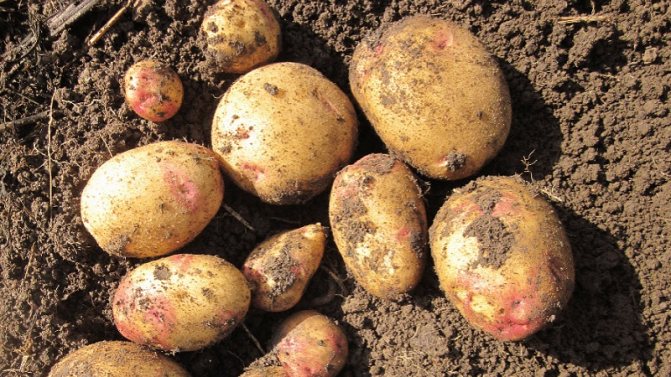

Growing features
They include proper planting care. Ermak is a variety with low immunity and additionally needs regular hilling and fertilization... Simultaneously with watering, fertilizing and pest control, it is required to loosen the topsoil and remove weeds.
Loosening will provide breathing for the root system, and weed control will minimize the appearance of harmful insects.
Watering mode
Ermak does not require regular watering... It does not apply to those varieties that die quickly without liquid.Water procedures are required only before the first hilling and during the formation of inflorescences. If the summer is dry, artificial irrigation with drip systems is used.
How to get a high yield
You can get a high yield of potatoes in Siberia in different ways.
Growing in a greenhouse
For cultivation in a greenhouse, tubers begin to be prepared as early as November. When sprouts appear, the potatoes are transferred to boxes with wet sawdust or peat, and taken out to a heated greenhouse. When the time comes for planting, the tubers will already have strong sprouts and roots. The holes are dug out according to the scheme 70 * 25 cm, 8 cm deep. A layer of peat or humus must be laid on the bottom, tubers on top, and all this is sprinkled with a layer of earth. There is no need to water the plantings, otherwise you will create an excess of moisture and the tubers will rot. When seedlings appear and the soil dries up, then you can water the potatoes for the first time. During the period of growth, flowering and formation of tubers, the humidity in the greenhouse should be at least 80-100 percent. The air temperature must be maintained at about +23 degrees. During the period of mass formation of tubers, it should be slightly lowered to +19 degrees. The yield in the greenhouse reaches 350 kg per hundred square meters, and it is not exposed to diseases and pest attacks. Ideal for growing potatoes.
Greenhouse
If your greenhouse is occupied by tomatoes, cucumbers or other crops, and there is absolutely no room for potatoes in it, creating a greenhouse will help you. Plant potatoes in the beds, set arcs, stretch the film, pressing it to the ground and the greenhouse is ready. The film retains heat well, but does not allow air to pass through. Therefore, in good weather, it will need to be opened for airing, weeding, watering and feeding the plants. The greenhouse must be closed at night. Thanks to the created conditions, you will get the harvest ahead of time.
High beds
Since the soil in Siberia heats up for a very long time, you can apply the method of growing potatoes in high beds. Since autumn, they are formed with a height of about half a meter with the help of hay, soil and manure. In these beds, potatoes can be planted earlier than in open ground for two weeks. To accelerate the heating of the soil, the following method is often used: spill with abundant hot water and cover with a film. After the ground warms up, tubers are laid in it. It is better to cover planting before the frost leaves.
Chinese method
The essence of the Chinese method is as follows: in the fall, you need to dig a trench 50 cm deep, make three holes 70 * 70 cm in it, about half a meter deep, at a distance of 25 cm from each other. At the bottom of the pit, organic matter is placed in the form of grass, leaves, food waste, hay, and ash (2-3 glasses) is added.
In the spring, when the soil warms up to +7 degrees, half a bucket of humus is poured onto the bottom of each pit, three potatoes are laid and sprinkled with 10 cm of earth. Before planting, the potatoes are prepared: a cross-section is made in the middle of the tuber, so that an untouched jumper 1 cm wide remains in the center. The plantings look like a trench with mounds that must be mulched with straw.
As the potatoes grow, it will be necessary to periodically fill up the soil and fertilize with bird droppings diluted in water, in a ratio of 20: 1, respectively. Water the trenches - as the soil dries up, in hot periods - at least 1 time per week.
When the trench is completely filled with earth, you need to let the plant rise to a height of 30 cm, then bend it to the ground, dig in and tear off the lower leaves. As they grow, the bushes continue to be covered with earth and sprayed, the flowers are removed.
When planting potatoes at the end of April, in July, you can harvest the first crop: up to 16 tubers weighing 1.7 kg from one mound. By autumn, the yield rises to 24 kg from one planted tuber.
Any potato variety suitable for your soil type and climatic conditions is suitable for growing. According to gardeners' reviews, varieties such as Karatop, Lyubava, Rosara, Scarlet have shown themselves well.
Growing potatoes by the Chinese method video
Under the straw
Recently, the method of growing potatoes under straw has been widely advertised. There are two planting options: potatoes are buried in the ground or laid on the surface of the ground, and covered with a 20 cm layer of straw or hay on top. It is believed that this method is suitable for lazy people, since it does not require special care.
Advantages and disadvantages of growing potatoes under straw table
By choosing the right variety and method of growing potatoes, even in Siberia, gardeners get high yields.
Harvesting and storage
The timing depends on the subsequent use of the potato... For consumption in the near future, the potatoes begin to be dug two weeks after the end of flowering. For winter storage, the crop is harvested in mid-August.
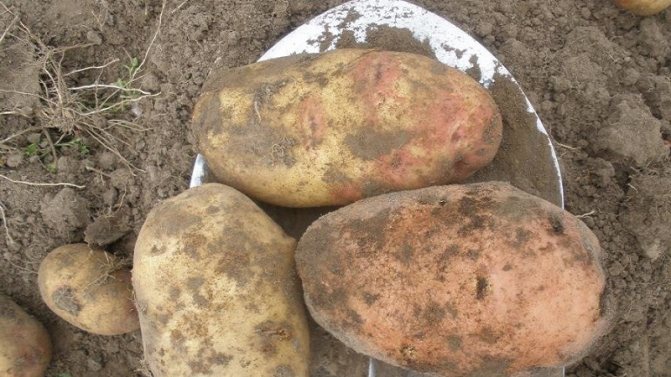

How and when to collect
The optimal timing is 35 days after the end of flowering.when the tops turn yellow and dry. The stems are pruned a week before harvest.
The tubers are dug out with a shovel or pitchfork, it is better to burn the tops... After digging, they are dried in a ventilated, shaded place for 2-3 days, then sorted, immediately postponing for sowing next year.
Features of storage and keeping quality of the variety
Dried potatoes are placed in sand boxes or cloth bags and transferred to storage in a cellar, where the temperature should be from 0 to + 4 ° C, and the humidity should be 70-85%. Ermak has good keeping quality - up to 93%. Therefore, the tubers remain fresh and firm until spring.
When and how much potatoes bloom
The culture begins to bloom about 25-30 days after germination. The size of tubers and their number depend on this important stage of the growing season. In the absence of flowering, the culture degenerates every year.
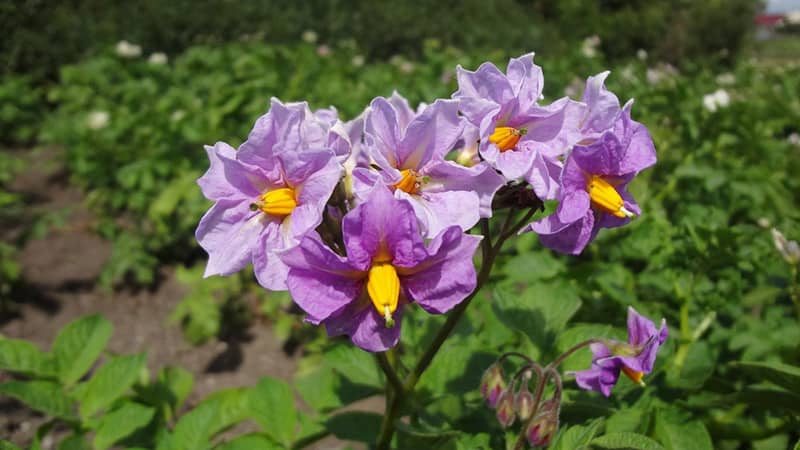

On average, the cycle lasts two weeks, but in some varieties it goes faster. When budding and the beginning of flowering, plants form 20-30 small tubers, of which only 5-10 fully ripen. At the peak of flowering, vegetables store nutrients and water.
Tips from experienced gardeners and reviews about the Ermak variety
Farmers recommend timely implementation of care measures, choose only high-quality planting material. Be sure to mow the tops before harvesting. The procedure will allow the tubers to ripen better, to accumulate more nutrients.
Reviews about Ermak are positive:
Ekaterina, Krasnoyarsk: “My family is very fond of potatoes. Therefore, we tried many varieties. The last time I decided to plant the domestic Ermak. The results were pleasing - the tubers are large, tasty and soft. But I couldn't make mashed potatoes. Of the shortcomings, I would like to note the weakness in front of the larvae of the Colorado potato beetle. I had to process it with Gamair several times. I give a solid 4 out of 5 ".
Ivan, Tambov: “I have been growing Ermak for a very long time. Delicious and large tubers delight. I would like to note that without careful care and dressing, the yield and quality are noticeably reduced. Due to cancer, about a dozen bushes had to be destroyed. If you don’t have time to grow this variety, it’s worth trying something different. ”
What to do and how to avoid
Depending on the reason for the lack of flowering, the actions that need to be taken to eliminate it will differ.
Did you know? For the first time, the Peruvian Indians living in the Andes began to cultivate potatoes more than 4 thousand years ago.
If the lack of flowering is caused by:
- peculiarities of the variety - no special measures need to be taken, this is a natural phenomenon that will not in any way affect the quality and quantity of the obtained crop;
- pest infestation - tops are processed by Fitoverm, if the number of pests on the plant is very large, it is necessary to use a more potent preparation, for example, Tanrek. These drugs completely destroy all pests that may be the reason for the absence of buds on the plant;
- infection of bushes with diseases - after the disease is recognized, treatment is started, for each disease there are drugs. To determine the most effective remedy, it is better to contact a specialized store for advice;
- planting weak tubers - such planting material requires additional attention and the introduction of increased feeding rates. A prerequisite for the normal growth of plants is the regular introduction of compost and ash into each hole during planting, and then feeding with all the recommended fertilizers for potatoes, according to the instructions;
- lack of nutrients in the soil - potatoes need additional feeding, especially those growing on nutrient-poor soils, therefore, mineral and organic fertilizers (which are applied according to the characteristics of the soil of a particular growing region) should solve the problem;
- excess nitrogen in the soil - when the plant is oversaturated with nitrogen, the bushes grow tall and powerful, but do not bloom. To solve the problem, it is recommended to cut the stems in half, fertilizing the plant under the root with ash (1 glass).
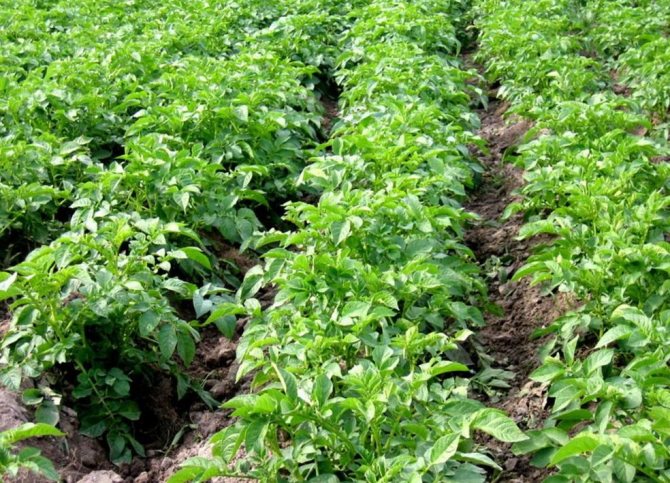

Characteristics of potatoes
Description of the variety
The description of this variety of potatoes has many positive aspects, since it is early and resistant to many diseases and pests. The growing season is 70-90 days.
It was bred by breeders using the type of potato "Early Rose". Intended for table use. The yield is 35-47 t / ha. The presentation of potatoes is quite high, 87-92%.
The characteristic of the variety is positive and has the following qualities:
- excellent presentation;
- good keeping quality;
- resistant to many diseases and pests;
- low starch composition, which prevents the potatoes from boiling too much;
- high productivity;
- loves various fertilizers and feeding;
The only downside is that the price is quite high, since it has only positive qualities.
Descriptions of fruits
The fruits are pink and oval in shape. The eyes are small. The pulp of the fruit is beige with a red addition. During maturation, the corolla has a purple hue. The weight of one fruit fluctuates between 90-117 g. The amount of starch in potatoes is 10-12%, which means that during cooking it does not boil and keeps its shape.
The best varieties of potatoes in Siberia
Siberia is a region with a sharply continental climate. There are long winters, short summers, frost in spring, heavy rainfall in late summer and early autumn. Not the most favorable conditions for growing potatoes. Nevertheless, it is the most common vegetable among gardeners. They are constantly trying new methods, looking for new varieties and achieving good results.
For cultivation in Siberian conditions, a zoned variety is suitable, with good resistance to adverse weather conditions.
Gardeners are guided primarily by the potato yield indicator.
The most productive for Siberia
Harvest Siberian varieties - photo
You need to understand that the maximum yields of these varieties can be achieved only if all technological processes are followed and good care.
For growing potatoes in Siberia, it is very important to get the harvest as early as possible, before the onset of cold weather. Therefore, preference is given to early (80–90 days) and medium early (100–115 days) varieties. Late (120-135 days) are not grown in this region - they will not have time to ripen.
The earliest
Early - photo gallery
Early varieties are good in that they give a harvest earlier than various potato diseases begin to develop. But their disadvantage is that they are poorly stored, therefore, for long-term storage, you need to choose medium-late varieties. The longer a potato grows, the higher its yield and flavor characteristics.
Frost-resistant elite
Some elite potato varieties that stand out against the general background not only in color, but also in their early ripening period (60–75 days) and, which is very important, frost resistance, can be safely attributed to the best ones for growing in Siberia.
Cranberry Red (Cranberry Red) - oval red tubers have a pleasant aroma and delicate taste. Potato pulp - with pink tints, does not change color during heat treatment. The tubers are smooth with almost no eyes. Used in any form. The variety is resistant to cold weather.
Huckleberry Gold (Huckleberry Gold) is distinguished by lilac fruits with a soft creamy pulp. The taste is peculiar. Only suitable for frying and mashed potatoes. Frost-resistant grade.
Huckleberry is an old known super-elite variety of Canadian breeders, also known as Red Cranberry. The dream of many gardeners with dark red smooth fruits that do not change color during heat treatment. Due to its cold resistance, it is grown in Siberia, the Moscow region and the Urals.
These varieties were bred for cultivation in Alaska, so they are perfect for Siberia.
Landing rules
The potato variety Ermak must be prepared in advance before planting in the ground. In addition, it is necessary to select the planting material. The fruits must be healthy and undamaged. If the potatoes are large, they are cut into several pieces. You also need to have 2-3 eyes on each tuber. Before planting, the fruits are germinated and treated with protective agents and fertilizers.
For the harvest to show great results, the tubers are soaked in a fertilizer solution. For its preparation, 400 g of nitrate and superphosphate are taken, these mixtures are dissolved in 10 liters of water. Fruits are placed in the prepared solution for 1 hour. During this time, the potato manages to take in all the nutrients, activates good growth and development of roots and stems. If you carry out the soaking procedure, you can harvest a week earlier.
Potato care rules
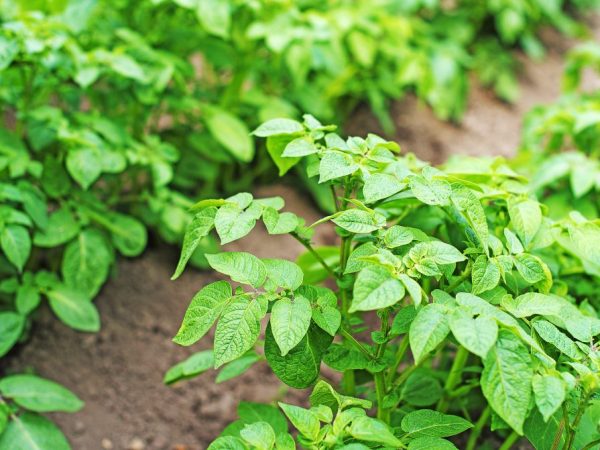

The plant needs fertilization
The characteristics of the variety indicate that it is not particularly picky, but it is worth paying a little attention to. Keeping the soil in order is the key to a good harvest. To harvest a good and high-quality crop, you need to take care of the plant. The gardeners drew up a description of Ermachk and set out all the conditions that it is desirable to fulfill.
- Mandatory digging of the soil. The first time they are loosened to a depth of 10 cm, and the subsequent ones by 5 cm.
- Top dressing begins when the plant reaches 15 cm.
- You can water the plant at the same time as feeding. During the entire growth period, 3 dressings are carried out. Fertilizers are used nitrogen, total and phosphorus-potassium. If you apply nitrogen fertilizer, then you need to control their amount. Therefore, it is better not to feed than to feed the plant, as it is possible to cause some damage to the roots and fruits.
Often, inexperienced gardeners are interested in the amount of watering in order to get a large harvest. Watering the type of potato Ermak does not differ from the watering of other types of potato. In hot weather, the amount of water must be increased, and if the weather is of average temperatures, then watering is used 3 times per season.
Insufficient care and feeding
During the flowering period, potatoes must be especially carefully looked after. At this time, the plant consumes a lot of water and nutrients.
The main recommendations on how to care for potatoes during the flowering period are:
- compliance with the irrigation regime (if there is no rain, then up to three liters of water are counted on one bush);
- after watering, loosening and hilling are carried out in order to improve air circulation and the supply of nutrients to the roots;
- special attention is paid to plant nutrition (both organic and mineral components are suitable).
To speed up the budding stage, it is useful to add wood ash with potassium sulfate. After the start of mass flowering, it is recommended to add superphosphate. For foliar processing, you can make a composition of urea, potassium sulfate and ammonium nitrate.
If you follow all these rules, then the potatoes will be large, without damaged tubers.
How to store potatoes correctly
The keeping quality of fruit depends on many reasons. First of all, these are weather conditions. If during ripening it was very cold and cloudy, then during storage there can be severe losses. The soil itself also affects storage. If the roots were grown on sandy loam and chernozem soils, then the potatoes will be stored much better. If you overdo it with nitrogen fertilizers, then the fruits will not last long. They can be killed by disease. Such factors also apply to the roots, which were low in potassium.
If the fruits become infected with late blight, they will not live long. The last and most important reason is the conditions in which vegetables will be stored. In order for the fruits to survive until the next planting, you need to know a few rules. In order to provide all the necessary conditions, after digging the crop must be dried. If you are already going to hide the potatoes in the cellar, before that, the fruits must be sorted.
Damaged and diseased fruits are thrown away. You only need to store potatoes whole and healthy. The storage time depends on the size of the fruit itself. The middle period includes large tubers. If the storage time is long, then medium potatoes are laid. The rest must be used in a short time.
What parasites and diseases can Yermak catch
The characteristic of the variety is positive even during diseases, since it is not exposed to almost everything. But there are exceptions, so you need to take preventive measures. To do this, use various means that are sold in special stores.
In addition, you can use folk methods in the fight against midges by treating the leaves of the plant with a solution of potassium permanganate (add a small amount to the water until it turns pale purple).
Ermak potatoes are a non-standard variety. In fact, it was not created separately. It is simply an improved version of the Early Rose cultivar by selecting “elite” tubers. As a result of the work, the “Improved Ermak” variety was obtained. It is under this name that it falls into the State Register of the Russian Federation in 1978.
The variety is recommended for cultivation in the West Siberian District. However, there are no restrictions on growing. Today Ermak is actively cultivated not only throughout Russia, but also in the countries bordering on the Russian Federation.
In the article, we will introduce you to the amazing variety Ermak, present its detailed description, photos and reviews of summer residents who have been familiar with large, frost-resistant tubers of this culture for more than one year.
Origin story
Initially, in the mid-70s of the last century, scientists breeders of the Omsk Agrarian Scientific Center bred a potato called Ermak by the method of clonal selection of the Early Rose variety. During the tests, a new variety of this potato, called Improved Ermak, was selected and obtained. It was under this name that this variety was included in 1978 in the State Register of Russia. Although experts recommend Yermak potatoes for cultivation, first of all, in the West Siberian District, this variety at one time successfully spread and conquered not only all of Russia, but also the near abroad. True, later he was ousted from the gardens of varieties of foreign selection, which many gardeners still regret.
Much later in the 21st century, with the light hand of an unknown gardener who received the tubers of this potato variety of unprecedented size, he was nicknamed Laptem. And in recent years, the Ermak variety has received a new wave of recognition and is often distributed among gardeners under the popular name Lapot.And many do not even suspect that they are acquiring a long-known variety of Siberian selection Ermak under this name.
Characteristics of the variety
Despite the fact that Ermak is preferred for cultivation in Western Siberia, it tolerates heat well. Also, tubers are not afraid of mechanical stress, and, therefore, are suitable for mechanical harvesting and transportation over long distances.
As for the tubers, these are 90-117 g of roots with a starch percentage of 10-12%. That is, during heat treatment, the potato retains its structure and does not crumble.
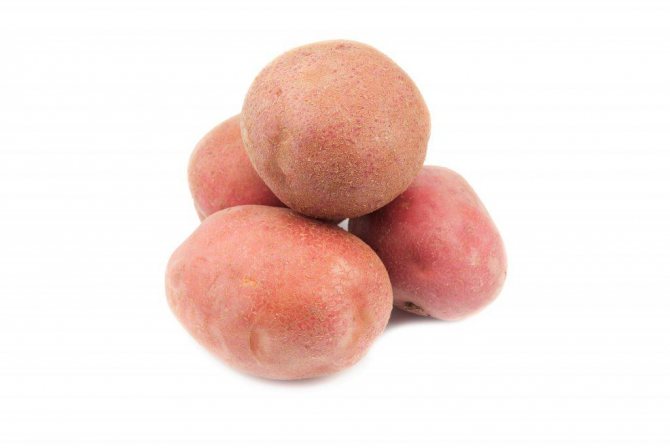

The rind of the tubers is pink, the flesh is white with characteristic red dots. The pulp tastes excellent. It does not darken during cleaning and heat treatment. The tubers are ideal for making salads, fried potatoes, fries, chips. Due to its low starch content, the variety is not very suitable for mashing.
The variety is mid-season. Ripening of tubers occurs on the 70-80 day of planting.
The yield is high - up to 470 centners per hectare. On average, with normal care, at home you can get at least 350 c / ha.
Ermak's bushes are erect type, the stems are very rarely covered with leaves. The flowers are painted in a pale purple hue. On average, 1 bush forms up to 15 medium potatoes.
Ermak has average immunity, which, unfortunately, does not completely protect him from most fungal diseases. The culture has an average resistance to late blight (tops and tubers) and scab.
Planting work
Only high-quality seed material is selected for planting. It should be medium tubers (70-80 g) without external defects. The tubers must be free of ulcers, growths, rot or any other stains.
One month before planting the seed, vernalization is carried out. This is the process of sprouting planting tubers. To do this, the potatoes are placed in boxes or laid on the floor in a warm room with good lighting. During vernalization, it is systematically necessary to spray the potatoes with water in order to maintain the normal process of sprouting of the fruit.
Vernalization is optional. But when it is carried out, the tubers take root faster in the soil, and it also becomes possible to select low-quality planting material with thin and weak shoots.
The ideal site for planting Ermak is the soil on which garlic, onion, legumes or pumpkin were previously planted.
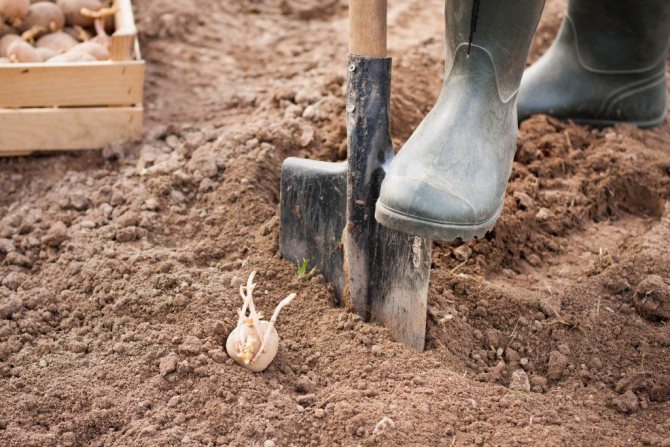

Potatoes are planted when the soil is well warmed up. The temperature to which the soil should warm up is +8 degrees Celsius. Previously, our grandmothers were guided like this: "If the buds opened on the birches, then it was possible to start planting root crops." In general, in the southern regions of the country, the planting of Ermak begins in early May, in the central part closer to its middle, but in the North - closer to the beginning of summer.
Landing is carried out as follows:
- Make holes up to 10 cm deep.
- The distance between the rows is 60-70 cm. Such a large distance plays a very important role. Firstly, the bushes are not shaded by each other and are well lit. Secondly, natural, normal air aeration is ensured. Thirdly, in the future it will be much easier to huddle the rows.
- The distance between the holes is kept 35-40 cm.
It should be noted that if the soil is poor enough, then during planting it is advisable to add a handful of wood ash, or, in extreme cases, humus, to each hole.
Cooking cocktails for colorful potatoes
It's time to get acquainted with cocktail recipes.
Kepor non-alcoholic tomato cocktail
Ingredients
- Tomato juice - 0.5 tbsp.;
- Kefir - 0.5 tbsp.;
- Peppercorns - to taste;
- Salt to taste;
- Paprika and salt - for the rim on the glass;
- A sprig of celery - for decoration.
Preparation of kefir-tomato cocktail for colored potatoes
- Grind the pepper.
- We mix all the components.
- Sprinkle with chopped pepper on top.
- Pour into glasses and decorate.
Refrigerate and serve well chilled.
Beer cocktail "White Night"
Ingredients
Determine the proportions of the components for yourself.
- Light beer;
- White rum;
- Light floral honey;
- A sprig of basil for decoration;
- Ice cubes.
Preparing a refreshing alcoholic cocktail of rum and beer with honey
- We mix all the components of the cocktail in the desired proportions.
- Decorate and cool well.
- Pour into glasses with ice cubes.
Culture care
Taking care of the culture is pretty simple. It is only important to carry out systematic watering and spud the bushes on time.
Irrigation
Ermak is not one of those varieties that quickly "die" without water. Moreover, even in a drought without watering, Ermak can give quite a good harvest. But still, if you don't want to take risks and want to squeeze the maximum out of the culture, then you need to follow a number of rules:
- First, you cannot water the potatoes before the tops appear. The first time Ermak is watered when the tops have grown to 10 cm.
- The second time the bushes are watered immediately after the beginning of flowering.
- The third is when the flowers begin to fade.
- It is not recommended to water the potatoes after flowering. The explanation is simple. After the end of flowering, the ripening phase begins. That is, Yermak's already weak immunity becomes even weaker. But late blight, on the contrary, is even more active.
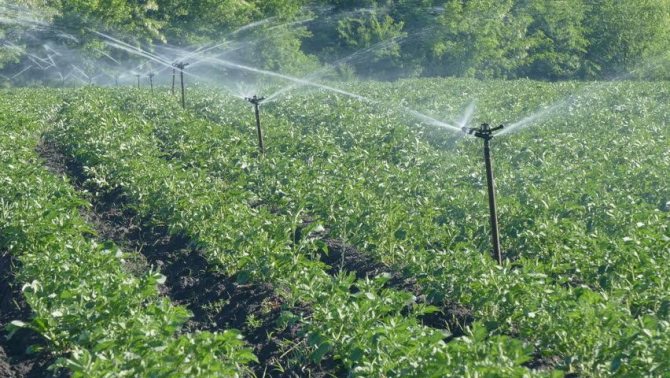

Hilling
Many gardeners are dismissive of this procedure. But experienced summer residents understand that it is better not to water the potatoes once than to skip hilling. Moreover, you need to huddle the bushes only 2 times per season.
The importance of hilling is due to a number of positive properties, in particular:
- When hilling, the soil is loosened. It is saturated with oxygen and allows the root system and root crops to develop normally.
- Hilling allows you to remove weeds from the garden. Thanks to this procedure, you can even refuse to weed, of course, if the area is not very weedy.
- And the last, most important advantage - hilling contributes to the formation of additional stolons. When hilling, stolons are formed on the lower part of the stems, which increase the yield of Ermak up to 30%. It would be foolish to lose such indicators.
Hilling is carried out twice a season. The first time, when the tops grew up to 15-20 cm, the second - just before the flowers appear on the tops.
Pests and diseases
As noted earlier, basically Ermak is more potato crayfish. But also manifestations of late blight and scab are not uncommon.
In order not to catch this infection, it is recommended to spray the bushes with Fitosporin solution for prophylaxis.
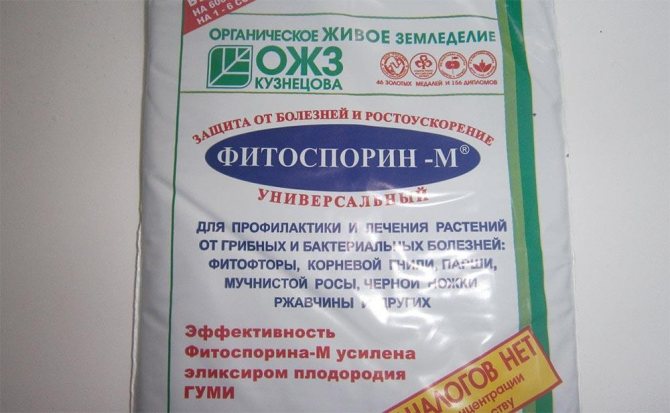

If the bush cannot be saved, then it is necessary to uproot it and burn it. And the place where the infected culture grew should be treated with special fungicides.
As for insects, the Colorado potato beetle is the biggest problem for Ermak. There are two ways to deal with it:
- Dedovsky. Collect parasites, their larvae and eggs and drown in soapy water.
- Chemistry. Purchase special insecticides on the market and treat the crop with them.
Harvesting and storage
A week before harvesting, experienced summer residents recommend mowing the tops. Firstly, it will protect her from possible damage by late blight. Secondly, in this way the tubers will ripen better, since all the nutrients will get into the root crops, and not into the green part of the crop. And thirdly, it will greatly simplify harvesting.
After harvesting, the tubers must not be immediately transferred to a permanent storage location. You need to leave them in the fresh air for several hours so that they have time to dry. After, they are sorted, selecting damaged and infected root crops. Only then can the potatoes be taken to the basement or cellar.
Testimonials
Ekaterina Mikhailovna, g.Krasnoyarsk, 47 years old.
Potato lovers. We tried many varieties, including Ermak. The tubers are huge, which makes cleaning inconvenient. Now we grow it not very much, purely for fries, children love it very much. Tasteful when it comes to making soups, mashed potatoes, etc. far from ideal.
Ivan Olegovich, Tambov, 56 years old.
Ermak grew up for a very long time. Recently I came across the Lapot variety. So, I argued with a friend, proving that it was not Lapot, but Yermak. Now I still don't understand whether he gave me Lapot or Ermak. But what can I say about Ermak. The variety is normal, it does not go in mashed potatoes, the tubers after processing are very dense. But frying or salads is perfect. He is not capricious in leaving, he loves watering, feeding. The tubers grow really huge, with a palm.
Olga, Novosibirsk region, 34 years old.
I didn't like the variety. The tubers are large, but fresh. It is impossible to cook mashed potatoes. Ermak was not grown, we bought in the market, we no longer buy.
Potatoes do not bloom - can the variety affect this?
The cultivar can affect the flowering of potatoes. For example, there are very early types of potatoes that grow so quickly that they do not even have time to get sick, ahead of the mass appearance of the Colorado potato beetles.
These include: Timo, Mariella, Roco, etc. They have a minus - a small yield. But, on the other hand, they actively produce young potatoes. Potatoes are divided into varieties depending on flowering: profusely blooming, little blooming, not blooming. For example, Spring will not flower during dry times.

